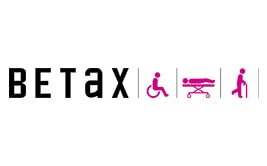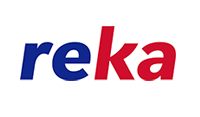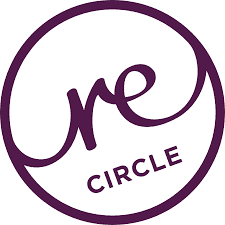Mobile commerce and mobile apps in 2015
An interview on the topic – April 2015
How would you define mobile commerce?
My definition would be something like the following: The purchase of goods and services using mobile devices regardless of the current location and time (i.e. completely independent of store opening hours). Mobile commerce or mobile e-commerce has already become “standard” in many areas today (e.g. rail transport) and buying services now and without having to wait is unthinkable without it. The reality: “Mobile commerce” should therefore no longer be a foreign concept, even for larger companies. The new sales opportunities are huge, especially when it comes to the young audience: people want to use services here and now. This means being able to buy a train ticket for the afternoon at home in the bathtub on a Sunday morning, purchasing an XBOX or Steam game online via cell phone or tablet and downloading it to the console or computer later. One of the most important aspects today is and remains Usability! Layout and appearance of the front end (“the eye also buys”!) and of course not to forget: the availability and stability of the mobile commerce solution are still decisive for commercial success. Problems that are still encountered in e-commerce today are even more pronounced in the mobile sector, as customers are even more impatient. Example: the online purchase of concert tickets – must work NOW on the bus or streetcar.
What is the most suitable option for a company that does not yet have a mobile solution for its website?
At the latest since Google’s announcement in February/March 2015 that the “mobile friendliness” of sites and online stores will have a significant impact on Google rankings from April 2015, you should definitely aim for a “fully responsive” solution from the outset.
What can you say about the pricing of the following mobile solutions: How expensive is it to create an additional mobile website from an existing website (with and without webshop)?
This question is certainly not easy to answer. Many factors play a role here: Is the existing website already “partially responsive” (has attention already been paid to certain aspects, e.g. slight optimization of the content grid for cell phones) or have no measures been taken at all? The design of the navigation also plays a major role. Websites with a deep sub-navigation are less optimal. Websites with a horizontal drop-down menu, which can be converted, are more optimal. Roughly speaking, the conversion costs can amount to around a third to a half of the implementation costs of the old solution.
How much does it cost to create a new website with responsive web design (with and without webshop)?
It certainly makes no sense to give concrete figures without knowing the exact requirements or specifications. Depending on the type of website (e.g. online travel portal), a new launch may be less expensive. We can implement simple full responsive sites from as little as CHF 2,500 (very simple sites). SME business customers always have higher requirements. On average, you can therefore quickly reach an amount between CHF 5,000 and around CHF 10,000 if the complexity is somewhat higher. Large corporations have to reckon with a budget from CHF 15,000 upwards. Full responsive online stores start at around CHF 5,000, on average our projects in the e-commerce sector are between CHF 10,000 and 50,000. The following always applies: the more complex, the more elaborate, the more expensive!
How expensive is it to create a mobile app (with and without webshop)?
Very simple apps without server access get by with a budget of around CHF 5,000, but as soon as something more complex is required (e.g. a backend for content management), you quickly reach CHF 10,000. Depending on the complexity of the project, this can quickly rise to CHF 25,000 and more.
What is your approach to a customer who wants to adopt a new mobile strategy?
It depends on whether the customer has already developed a digital strategy. In most cases, this is actually the case and it is primarily a matter of implementation based on an existing rough concept.
How long does a mobile implementation (from analysis to programming to activation) of an existing web store take on average?
Again, this is difficult to answer off the cuff without a detailed catalog of requirements. The more complex the store, the greater the project effort will be. In our experience, this can be 1-3 months.
What is the most common problem when creating the mobile version of existing websites/webshops?
The most common problem is that existing content does not fit. This means that the image material does not have the correct initial size, or HTML table content has been created with fixed column widths that cannot be made responsive without conversion. Of course, the type of system used also plays a role, i.e. how flexibly the store software or CMS can be adapted. Very often, inflexible and hardly widespread store systems are used, which massively increase the conversion effort.
How do you see the future of the mobile industry, are there new solutions for the future or which variants of the existing solutions do you think will prevail?
The future has already begun, we are already in the middle of it. Changes are taking place every day. When new cell phones come onto the market with larger displays and more power, this always has an impact on mobile commerce. The future is moving in the direction of even more elegant, even more beautiful and, above all, very easy-to-use solutions. Apple was certainly the pioneering company here. Optics and usability came with the iPhone. In the meantime, everyone else is following suit. The Samsung Galaxy S6 has just been released and everyone is already clamoring for it. The cell phone offers good performance, which will have a knock-on effect on the app market later on. The more powerful mobile devices are, the more unimagined possibilities there are. A possible new trend may already have been set with the iWatch.
Which of the three variants – mobile websites, responsive websites and mobile apps – is currently most and least in demand?
The demand for mobile apps is falling minimally (approx. 30% fewer inquiries from SMEs since 2014), as responsive websites and portals cover a great deal in one fell swoop. In addition, there is only one solution to maintain and not two separate ones. The situation is different for large corporations, where demand is the same but increasing slightly.
Which app variant (native, web or hybrid) would you recommend to a distributor of toner, inks and similar office supplies?
A web version for cost reasons. You can make a comparison with Zalando: For a long time, there was no Zalando app. You simply ordered via the Zalando website, could navigate easily and almost had “an app feeling”. A Zalando app is now available, as a cross-platform app for iOS, Android and Windows Phone allows you to appeal to even more customers and create more elegant product catalogs. The visual appearance certainly plays a major role here. For a toner and office supplies company, the look of the catalog and the products are less important. Seen in this light, the costs are not justified. In addition, the costs for updates and ongoing maintenance are comparatively high for a native app.
When do you recommend a company introduce a mobile solution?
From the point at which it is clear that end customers are on the move and are interested in the company’s products and services. This can be easily determined using statistics (e.g. via Google Analytics, statistical share of mobile devices).
What points should be considered before an existing webshop can go mobile?
Usability, usability and more usability! This is certainly one of the number one pitfalls! Before going live, you definitely need to carry out sufficient tests with as many people as possible who correspond to the target group. The feedback from this test group should definitely be incorporated into the solution (or the next release).
In your opinion, which features should be given the highest priority when implementing a mobile solution (in terms of content, usability, performance, finance, etc.)?
The question has actually already been answered, e.g. at 11). Usability first! Everything else is absolutely secondary. Of course content and performance are important, but nobody will use an app a second time if they didn’t understand how it works the first time. Mobile commerce users are VERY impatient and changeable!
What points need to be considered when developing a mobile concept for a company?
The concept should be as customer-oriented as possible, i.e. it is essential to know the customer exactly. Mobile commerce customers are impatient, usually younger, want to be entertained and want to be able to make their own decisions. A 19-year-old customer will have completely different requirements for a mobile solution than a 50-year-old customer. The older customer will be happy if he can buy his SBB ticket online, while the young person will ask himself: Why can’t I order my monthly subscription for the next month online? The younger the end customer is, the more they expect. At Postfinance, we found that the first thing customers wanted was to check their current account balance. Young people were more likely to want to be able to purchase console credit (Nintendo, Xbox etc.) in electronic vouchers or subscriptions to Spotify, for example, via the Postfinance app. Basically, the same requirements apply as for “normal online stores”, except that the exact focus on the needs is even more important. e.g. an iOS app should therefore offer other “gadgets” in addition to e-commerce aspects, so that the app is used regularly and not just once. Customer loyalty! The app must therefore be helpful. Digitec/Galaxus: comparing products is nowhere more convenient.
Are customers really shopping on their smartphones and tablets or are they just gathering information? Is the shift from desktop PCs to mobile devices just hype or how do you assess the situation?
Very few purchases are still made via mobile devices. But there is a lot of pre-buying, e.g. the digitec.ch and galaxus.ch stores have had such experiences. Many potential customers use the store primarily as a product catalog while on the move: What’s available, how much does it cost? Products are compared and the better the usability and user experience, the more likely they are to order. However, orders are preferably placed on a slightly larger tablet (e.g. iPad Air) or desktop computer from home. Customers are specifically afraid that something could go wrong during the ordering process or that the connection could be interrupted (e.g. when ordering from the train). However, specific apps are becoming increasingly popular: for example, Nespresso capsules can be ordered much faster with the Nespresso app than if you have to complete the process on a desktop computer. As a result, more and more customers are getting a taste for mobile commerce. In most cases, however, ordering by invoice is a prerequisite or you have already ordered in the online store and entered your payment details (reason: nobody enters their credit card details on the streetcar or bus!) Berne, April 2015
Wenn auch Sie mit einer Herausforderung konfrontiert sind und Unterstützung oder Beratung benötigen, dann kontaktieren Sie uns gerne.



















